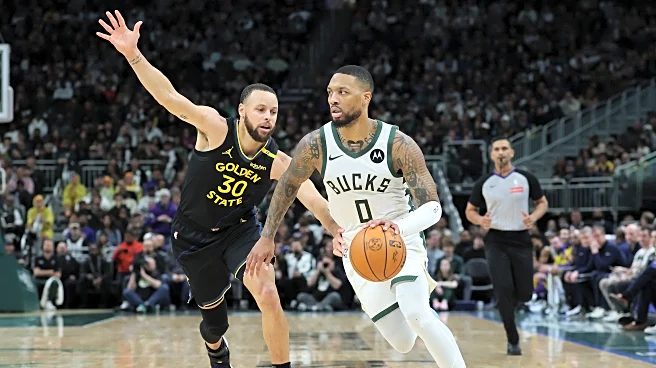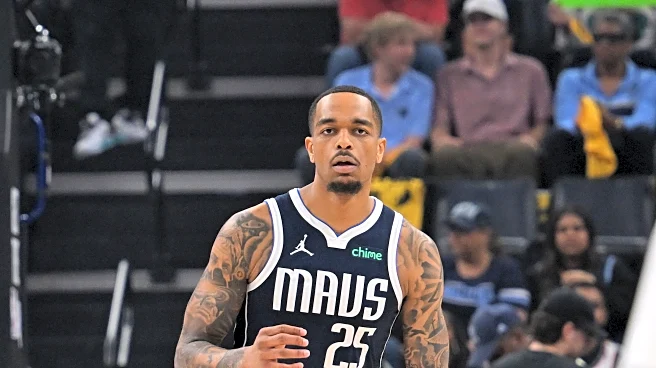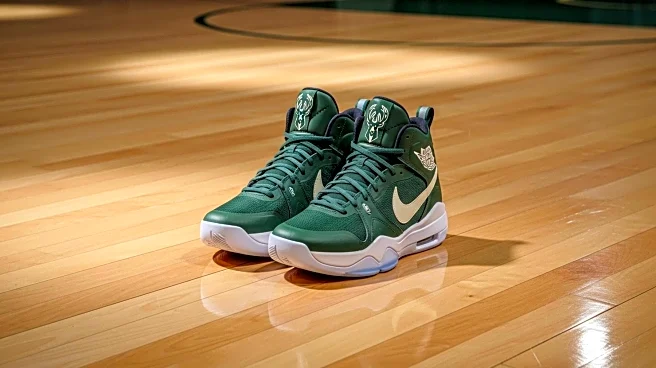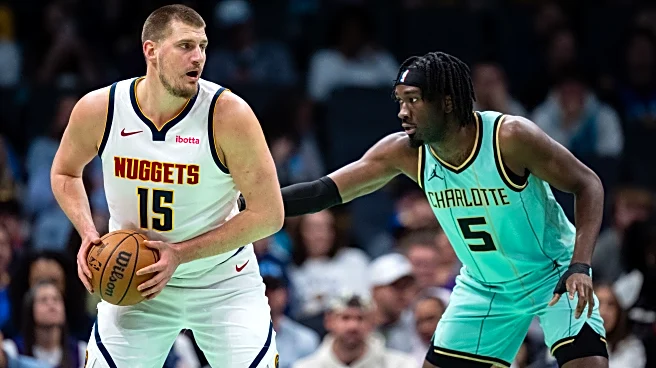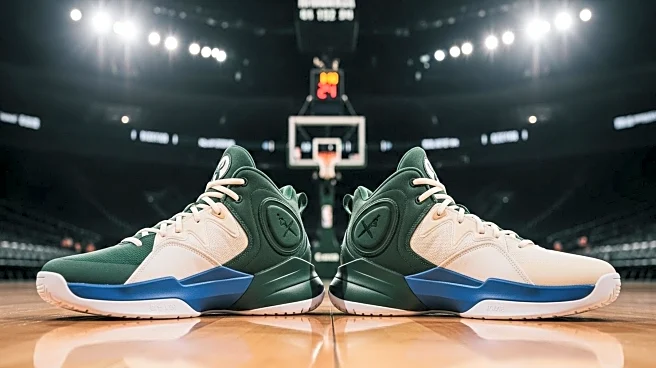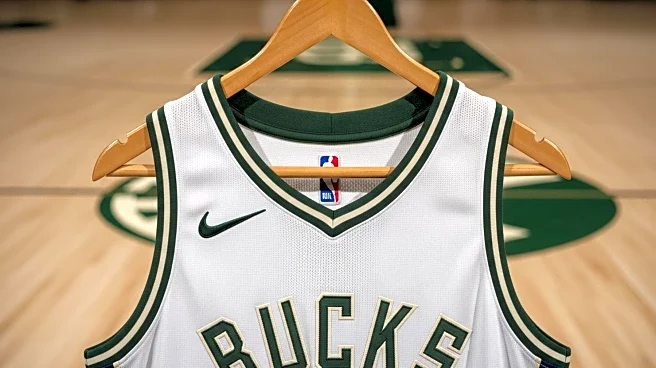What is the story about?
What's Happening?
Several NBA teams are grappling with complex salary cap situations as they navigate player trades and contract extensions. The Oklahoma City Thunder, despite having a young core capable of competing for championships, may face financial hurdles in the coming seasons. They are projected to remain under the luxury tax threshold this season but could exceed it by 2026-27. The Toronto Raptors, having extended Brandon Ingram, are over the tax and betting on their core players like Scottie Barnes and RJ Barrett to deliver results. Meanwhile, the Dallas Mavericks have made significant moves, including acquiring Anthony Davis and drafting Cooper Flagg, which require strong performance to justify the financial outlay. The Milwaukee Bucks made a bold decision by waiving Damian Lillard, resulting in $22.5 million in dead money over five years, but this move allowed them to sign Myles Turner and potentially appease Giannis Antetokounmpo.
Why It's Important?
The financial strategies employed by these NBA teams highlight the delicate balance between building a competitive roster and managing salary cap constraints. Teams like the Thunder and Raptors are investing heavily in their current rosters, hoping for success that justifies their financial commitments. The Mavericks and Bucks are making strategic moves to optimize their payroll while aiming to remain competitive. These decisions have significant implications for team performance, player satisfaction, and long-term financial health. Successful management of salary cap issues can lead to sustained competitiveness, while missteps may result in financial strain and limited flexibility in future player acquisitions.
What's Next?
As the NBA season progresses, these teams will need to monitor their financial situations closely and make adjustments as necessary. The Thunder may explore trades or contract renegotiations to maintain flexibility. The Raptors will need their core players to perform well to justify their financial strategy. The Mavericks and Bucks will be under scrutiny to see if their recent moves pay off in terms of team success and player satisfaction. Future trades, extensions, and draft picks will play a crucial role in shaping the financial and competitive landscape for these franchises.
Beyond the Headlines
The salary cap challenges faced by these teams also reflect broader trends in the NBA, where player salaries and team payrolls are increasingly scrutinized. The league's financial structure requires teams to be innovative and strategic in their roster management, balancing immediate competitiveness with long-term sustainability. These developments may influence how teams approach player contracts and trades in the future, potentially leading to shifts in league dynamics and competitive balance.
AI Generated Content
Do you find this article useful?



